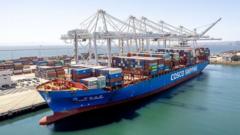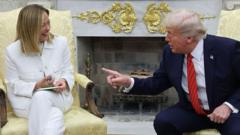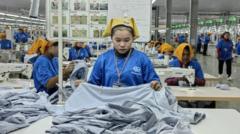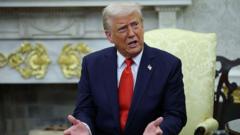In a complex foreign policy landscape, Trump's tariffs inflict pain on China while creating opportunities for Beijing.
Trump's Tariffs Hurt China but Offer Strategic Openings

Trump's Tariffs Hurt China but Offer Strategic Openings
President Trump's policies may inadvertently boost China's global influence as U.S. allies are undermined.
As President Donald Trump continues his aggressive "America First" strategy, the repercussions for international relations are beginning to unfold. Trump's imposition of tariffs not only puts pressure on China but also has the potential to enhance Beijing's global position by alienating U.S. allies.
Recently, amid tensions surrounding military deportations from Colombia, China's ambassador to Bogotá stated that relations between China and Colombia were at their "best moment" in decades. This statement came shortly after Trump announced new tariffs on Colombian goods, suggesting that China is keen to seize opportunities amid the ongoing superpower rivalry with the United States.
Two weeks into Trump's latest term, the implications of his foreign policy are becoming apparent. While he enforces additional tariffs—citing China's inaction on fentanyl exports—the prospect of retaliation from China looms large. Trump has already signaled that if China responds, he is prepared to escalate further.
For China, the new tariffs come at a challenging time for its economy, but they also present a unique chance to recalibrate its standing on the world stage. By distancing itself from the U.S.—which has cut foreign aid, withdrawn from key pacts like the World Health Organization and the Paris Agreement, and imposed steep tariffs on exports from allies such as Canada and Mexico—China may find room to strengthen ties with other nations.
This situation illustrates a growing divide in global diplomacy, where the fallout from U.S. policies may empower China to position itself as a more favorable partner in contrast. As Trump pursues his contentious agenda, the long-term implications for international relations and trade dynamics remain to be seen.





















